Modern architecture captures the essence of innovation, creativity, and functionality, transforming our spaces into breathtaking works of art.
From stunning residential homes to awe-inspiring commercial buildings, the designs push the boundaries of what we thought was possible. In this article, we will explore 21 remarkable modern architecture designs that showcase the latest trends and innovative structures, each one more captivating than the last. Prepare to be inspired as we unveil a journey through the most stunning architectural marvels of our time!
Contents
- 1. The Floating House
- 2. Green Roof Architecture
- 3. Minimalist Marvels
- 4. Biophilic Design
- 5. Smart Homes
- 6. Modular Homes
- 7. Urban Vertical Gardens
- 8. Sustainable Materials
- 9. Cantilevers in Architecture
- 10. Adaptive Reuse
- 11. Parametric Design
- 12. The Infinity Pool
- 13. Sculptural Architecture
- 14. Natural Ventilation
- 15. The Use of Light in Design
- 16. Integrated Technology
- 17. Open Concept Living
- 18. Architectural Lighting
- 19. Community-Centric Designs
- 20. Weather-Resilient Architecture
- 21. The Future of 3D Printing in Architecture
1. The Floating House
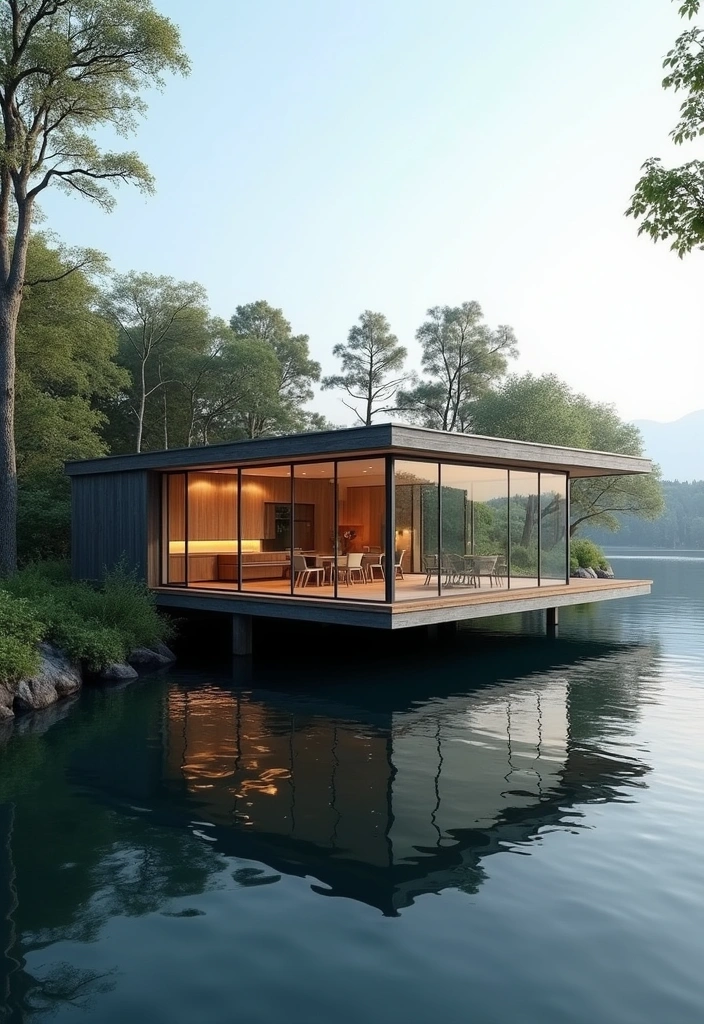
Imagine a home that seemingly defies gravity, giving the illusion of floating above the ground. The Floating House concept employs stilts and cantilevers to create an effect of lightness and airiness, offering breathtaking views of the surrounding landscape. This innovative design not only presents a striking visual appeal but also enhances flood resistance in areas prone to water damage.
To bring such visionary ideas to life, utilizing architectural design software can be crucial for modern architects and builders. Additionally, the use of large glass panels invites natural light to flow throughout the space, seamlessly blending the indoors with the outdoors, and promoting a serene living experience. To complement this architectural marvel, incorporating home decor for modern homes can enhance the overall aesthetic, while selecting eco-friendly building materials ensures that the construction is sustainable and environmentally conscious. This innovative structure is a testament to modern architecture’s ability to tackle environmental challenges while providing a stunning living space.
2. Green Roof Architecture

Green roof architecture represents a groundbreaking advancement in modern design, championing sustainability and a commitment to environmental stewardship. By incorporating vegetation directly into building structures, these green roofs offer numerous benefits such as enhanced insulation, reduced rainwater runoff, and improved air quality.
To create and maintain these lush rooftop gardens, investing in quality gardening tools for green roofs is essential. An eco-friendly soil mix is also vital for ensuring the health and vitality of the plants; you can find a great option here.
Moreover, green roofs seamlessly transform urban areas into vibrant green havens, fostering biodiversity and providing habitats for wildlife. To enhance the enjoyment of these rooftop spaces, consider adding stylish outdoor furniture for rooftop gardens, which can significantly elevate both the aesthetic appeal and functionality of these eco-friendly designs. In turn, such features can lead to substantial energy savings, making green roofs an increasingly popular choice among architects dedicated to eco-friendly practices.
3. Minimalist Marvels

Minimalism in architecture is all about embracing simplicity, functionality, and the inherent beauty of space. Minimalist marvels are characterized by clean lines, expansive open areas, and a carefully curated color palette, all of which contribute to a serene atmosphere that promotes calm and clarity.
This design philosophy not only emphasizes the use of high-quality materials but also advocates for the removal of extraneous elements, allowing the architecture itself to shine. To complement this aesthetic, consider incorporating minimalist furniture that enhances the simplicity of your space.
Additionally, utilizing home organization products can help maintain a clutter-free environment, perfectly aligning with the minimalist ethos. For those looking to dive deeper into this design trend, exploring interior design books on minimalism can provide invaluable insights and inspiration for creating your own harmonious blend of form and function, ideal for modern lifestyles that cherish clarity and simplicity.
4. Biophilic Design
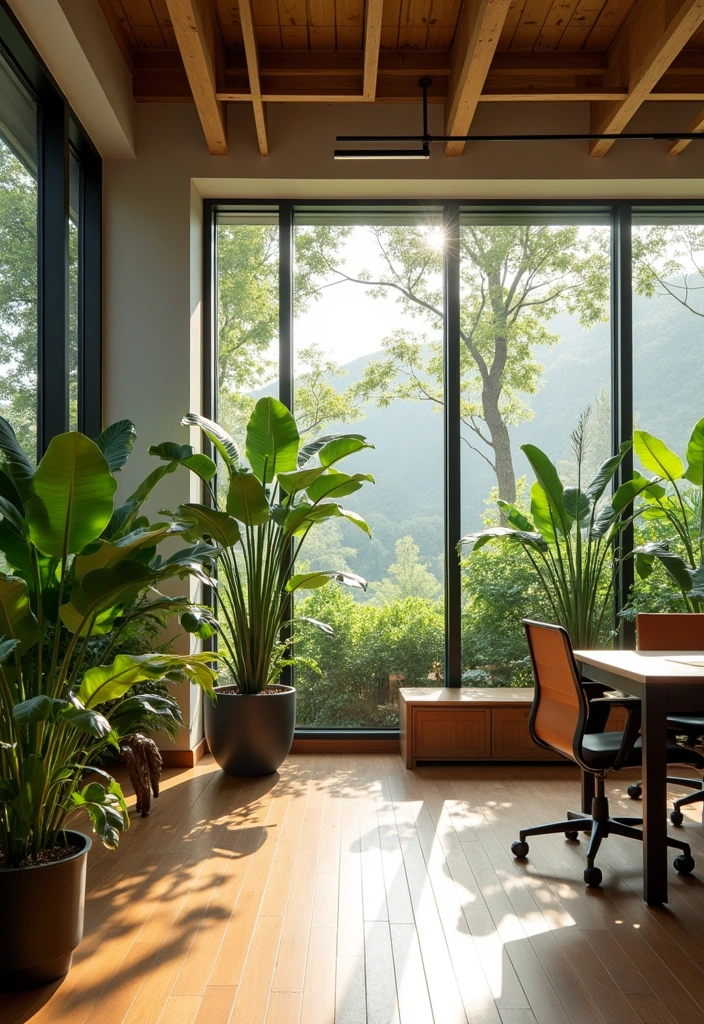
Biophilic design aims to establish a harmonious relationship between people and the natural world through thoughtful architectural elements. This innovative approach incorporates natural materials, abundant light, and lush greenery into buildings, significantly enhancing the well-being and productivity of their occupants.
By seamlessly integrating the outdoors within indoor spaces, biophilic environments nurture creativity and alleviate stress, making them ideal for both residential and commercial applications. One way to achieve this is by adding indoor greenery with Indoor Plant Kits, which can transform any space into a vibrant oasis.
Additionally, utilizing eco-friendly office supplies supports sustainable practices while contributing to a healthier work environment. For those looking to delve deeper into this design philosophy, exploring biophilic design books can provide valuable insights and inspiration. Together, these elements reshape our interactions with our surroundings, promoting a more balanced and nature-rich lifestyle.
5. Smart Homes
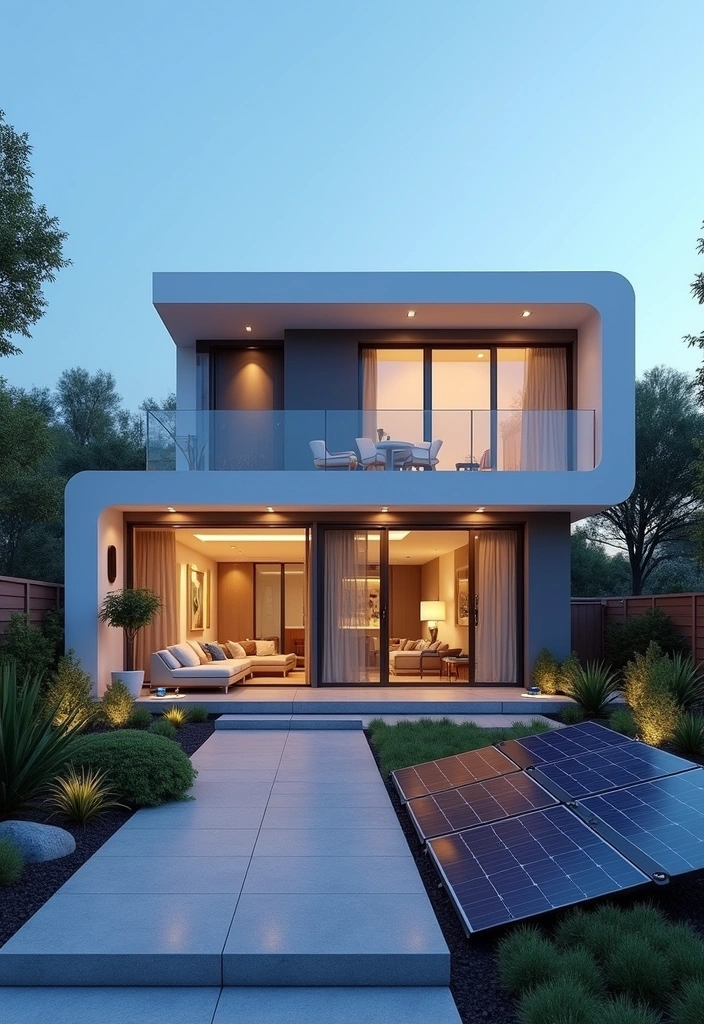
Modern architecture is increasingly incorporating technology through the advent of smart homes, which seamlessly integrate automation and advanced systems into everyday living. These innovative homes are equipped with smart home devices that enhance convenience, security, and energy efficiency.
From intuitive smart thermostats to automated lighting solutions, each element is meticulously designed to elevate the quality of life for residents. Additionally, comprehensive home automation kits allow homeowners to control their environment with ease.
This technological trend not only provides exceptional comfort but also encourages sustainable living by optimizing energy consumption. As a result, energy monitoring systems have become essential components, making smart homes a crucial aspect of future architectural designs.
6. Modular Homes
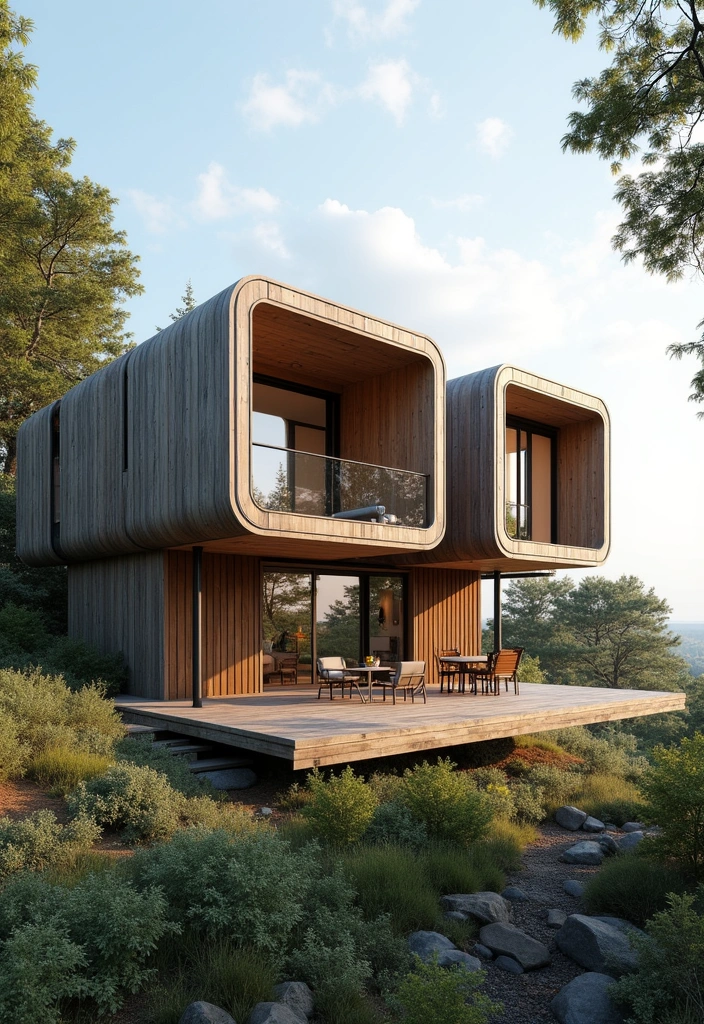
Modular homes are transforming the housing industry with their innovative, efficient, and sustainable designs. Built in sections or modules, these homes are prefabricated in factories and assembled on-site, significantly reducing both construction time and material waste.
This modern architectural approach offers a high level of customization, allowing homeowners to design unique living spaces that truly reflect their personal style. For those looking to embark on this journey, consider exploring Modular Home Design Plans to help bring your vision to life.
Furthermore, modular homes can be constructed using eco-friendly building materials and equipped with energy-efficient systems, making them a perfect choice for environmentally conscious homeowners. If you’re ready to take on a DIY project, don’t forget to check out essential construction tools that will aid in the assembly and customization of your new modular home.
7. Urban Vertical Gardens
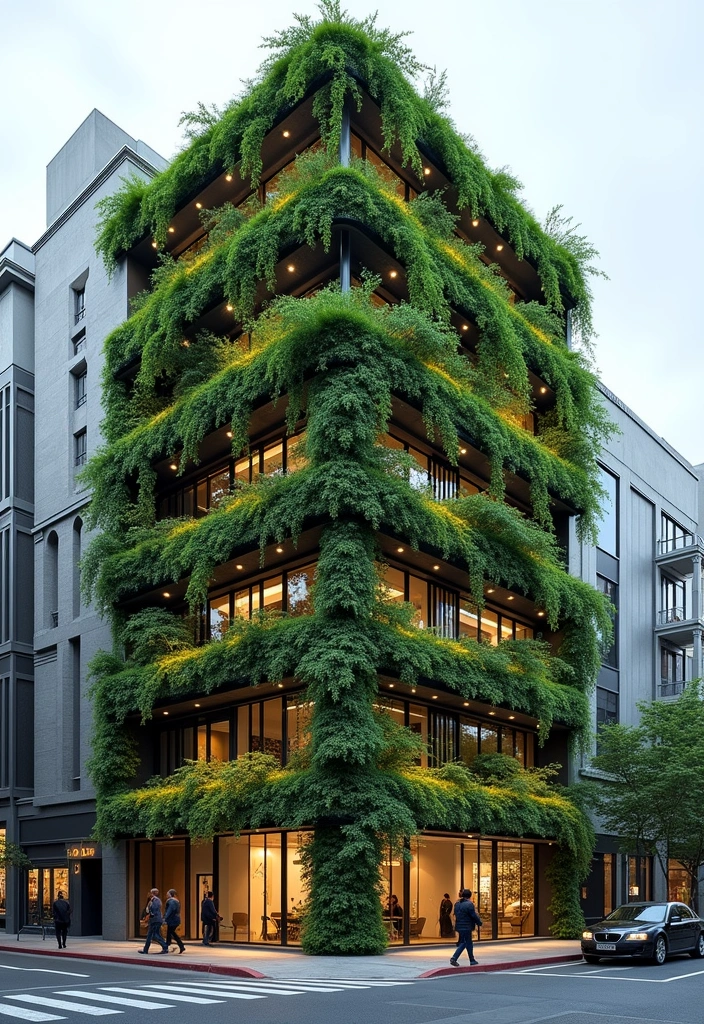
Urban vertical gardens represent a breathtaking solution to the challenges posed by urbanization, particularly its detrimental effects on greenery. By utilizing vertical spaces for planting, these innovative structures create stunning green tapestries on the walls of buildings, transforming urban landscapes into vibrant showcases of nature.
Not only do vertical gardens enhance the aesthetic appeal of cities, but they also contribute to improved air quality and provide natural insulation. To get started on your own vertical garden, consider investing in Vertical Garden Kits, which offer all the essentials for creating your green masterpiece.
Additionally, a reliable Irrigation System for Plants can help maintain the health and vibrancy of your garden, ensuring that your plants thrive in their vertical home. For those looking to deepen their understanding of this gardening technique, a selection of insightful Gardening Books on Vertical Gardening is available to guide you through the process.
Ultimately, these vertical gardens serve as a beautiful reminder of nature’s resilience amidst concrete jungles, fostering a sense of community and promoting eco-friendly practices within urban living.
8. Sustainable Materials
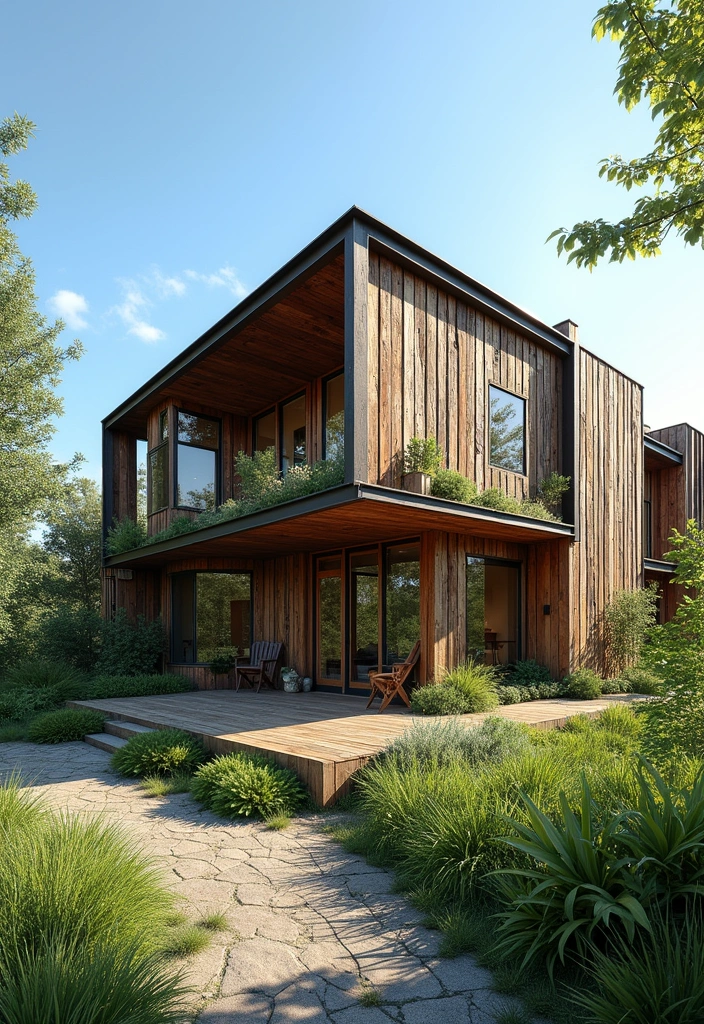
The incorporation of sustainable materials has emerged as a significant trend in modern architecture, highlighting an increasing consciousness about environmental sustainability. Architects are now turning to eco-friendly options like eco-friendly building materials, reclaimed wood, bamboo, and recycled metals in their innovative designs.
These materials not only help reduce the carbon footprint but also infuse buildings with character and individuality. Additionally, sustainable materials contribute to healthier indoor environments and enhance the durability and resilience of structures. For those looking to delve deeper into this sustainable movement, sustainable design books offer valuable insights and inspiration.
Moreover, incorporating reclaimed wood decor items into your space not only supports this eco-conscious approach but also adds a unique touch to your home or office. Embracing sustainable materials is indeed a key element of modern architecture, paving the way for a greener future.
9. Cantilevers in Architecture
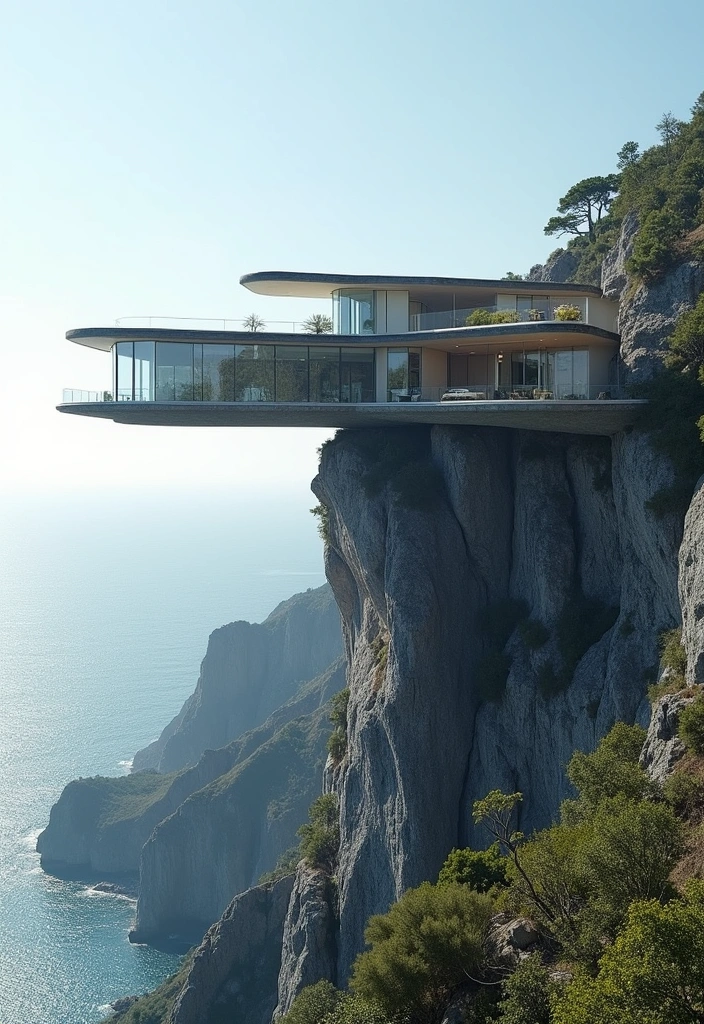
Cantilevers represent a bold and innovative architectural element that extends structures beyond their foundational base, creating striking overhangs that draw the eye and inspire admiration. This design approach not only provides expansive open spaces and breathtaking panoramic views but also eliminates the need for support structures beneath, showcasing the beauty of engineering.
For those intrigued by the intricacies of cantilevers and their applications, exploring engineering books on cantilevers can offer valuable insights into the principles behind these designs.
Additionally, if you’re looking to delve deeper into the world of architecture, consider building your own creations with architectural model kits, which can help you grasp the fundamental concepts of cantilever construction.
Moreover, for those involved in the practical side of architecture, understanding structural support systems is essential to appreciating how these daring designs are safely realized in modern buildings, from residential homes to striking commercial spaces.
10. Adaptive Reuse
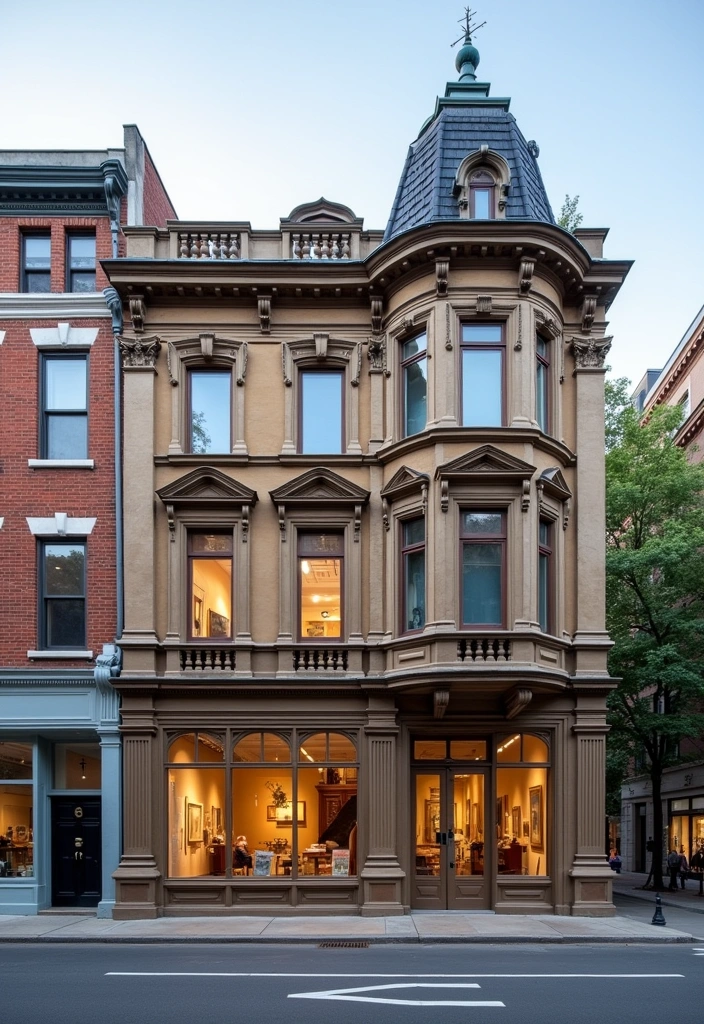
Adaptive reuse is an innovative approach that revitalizes old buildings by reimagining them for contemporary purposes. This sustainable practice not only preserves the cultural significance of historical structures but also transforms them into functional spaces that meet modern needs.
For those looking to dive deeper into this fascinating trend, you might consider exploring insightful books on adaptive reuse that provide valuable perspectives and case studies. Additionally, historical architecture guides can enhance your understanding of the architectural styles and contexts that make adaptive reuse so unique.
Moreover, if you’re inspired to embark on your own restoration projects, having the right tools is essential. Check out these restoration tools to help you bring new life to old spaces.
Through adaptive reuse, we not only reduce waste but also enrich community value by maintaining the character of neighborhoods, creating architectural statements that beautifully blend the old with the new while telling captivating stories.
11. Parametric Design
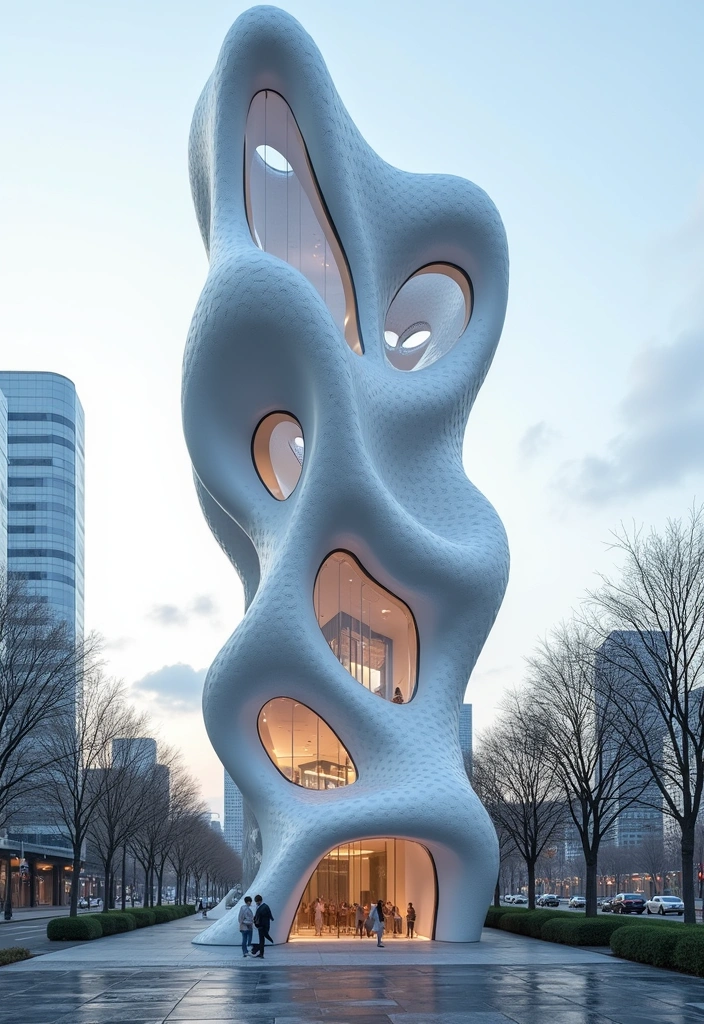
Parametric design represents a revolutionary approach in modern architecture, leveraging algorithms and computational processes to craft intricate forms and structures. This innovative trend empowers architects to delve into unique shapes and patterns that were previously deemed unattainable.
By adjusting various parameters, designers can customize buildings to meet specific needs, enhancing both their performance and visual appeal. To fully embrace this cutting-edge methodology, one can explore 3D modeling software, which provides the tools necessary for creating complex designs.
For those looking to deepen their understanding of parametric techniques, consider investing in architecture design books that cover the nuances of this approach. Additionally, utilizing architectural visualization tools can help bring these imaginative concepts to life, showcasing the extraordinary potential of technology and creativity in architecture.
12. The Infinity Pool
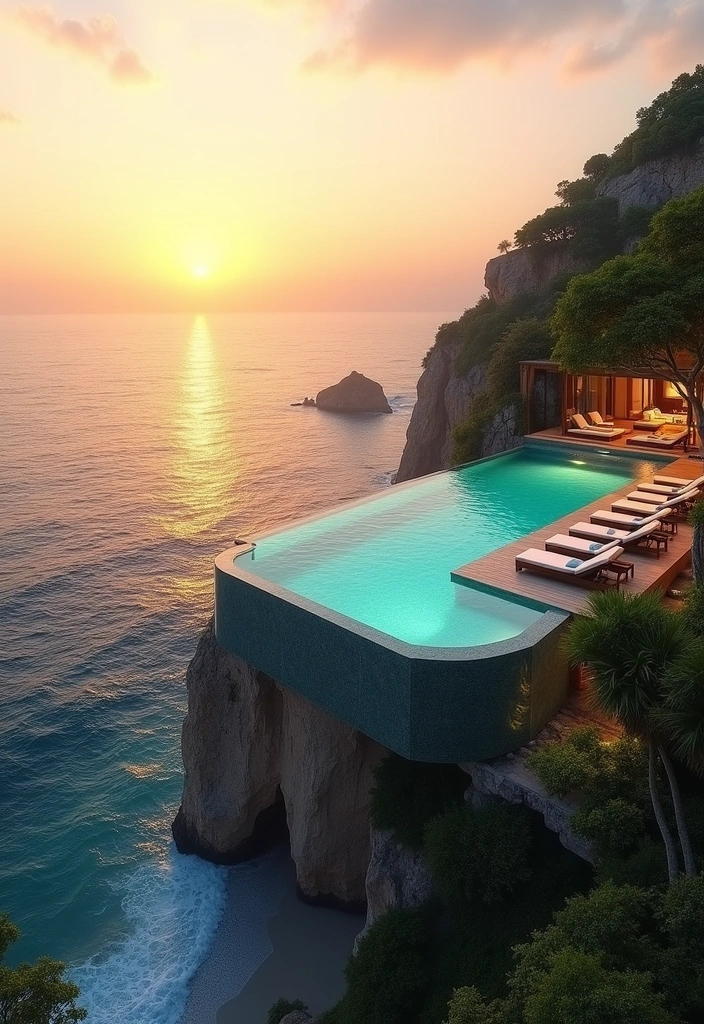
The infinity pool represents the pinnacle of modern luxury and architectural innovation, offering an enchanting blend of water and sky. These exquisite pools are designed to create the illusion of extending infinitely into the horizon, providing stunning views and a serene ambiance.
Typically located in upscale homes and luxurious resorts, infinity pools leverage sophisticated engineering techniques to achieve their breathtaking effect, making them not just a stunning focal point but also a sanctuary for relaxation amidst nature.
To enhance your infinity pool experience, consider investing in high-quality luxury pool accessories that will elevate both the aesthetics and enjoyment of your outdoor oasis.
13. Sculptural Architecture
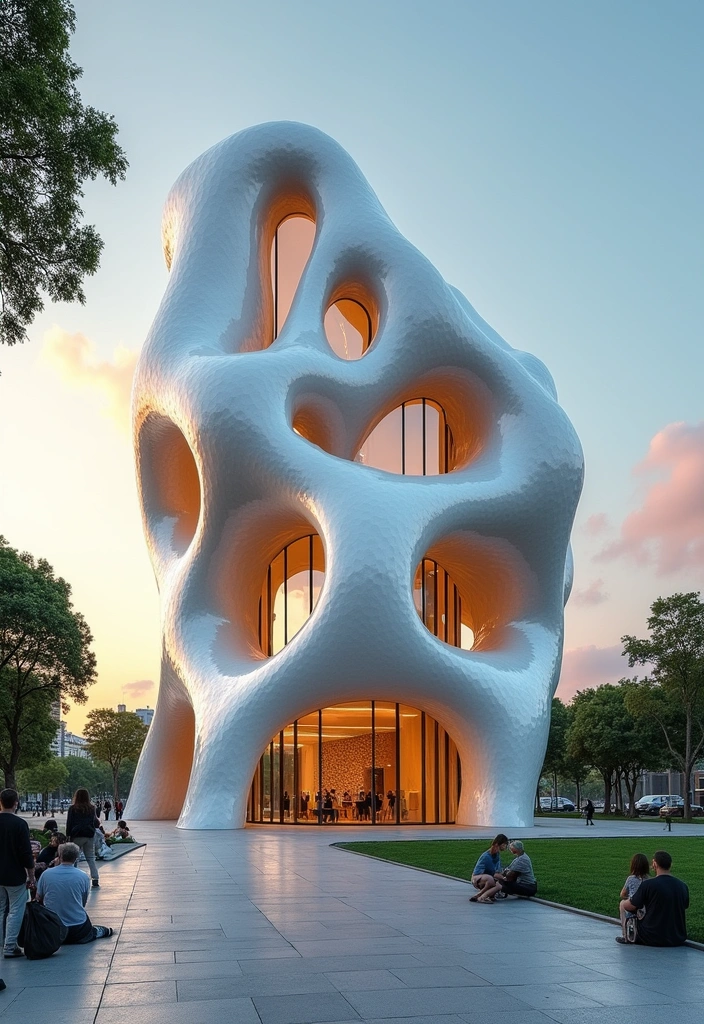
Sculptural architecture elevates buildings to the status of art, skillfully merging functionality with stunning aesthetics. This innovative trend embraces daring shapes, unconventional materials, and imaginative forms that truly ignite the imagination. As a result, these architectural marvels often become iconic landmarks, leaving a lasting impression on their surroundings and evoking a sense of awe from all who encounter them.
For those intrigued by this captivating style, exploring books on sculptural architecture can provide deeper insights into its principles and notable examples. Additionally, architects looking to create their own inspired designs may find essential tools and resources in art supplies specifically tailored for their craft. Together, these resources can help foster a greater appreciation for the beauty and creativity that sculptural architecture represents.
14. Natural Ventilation
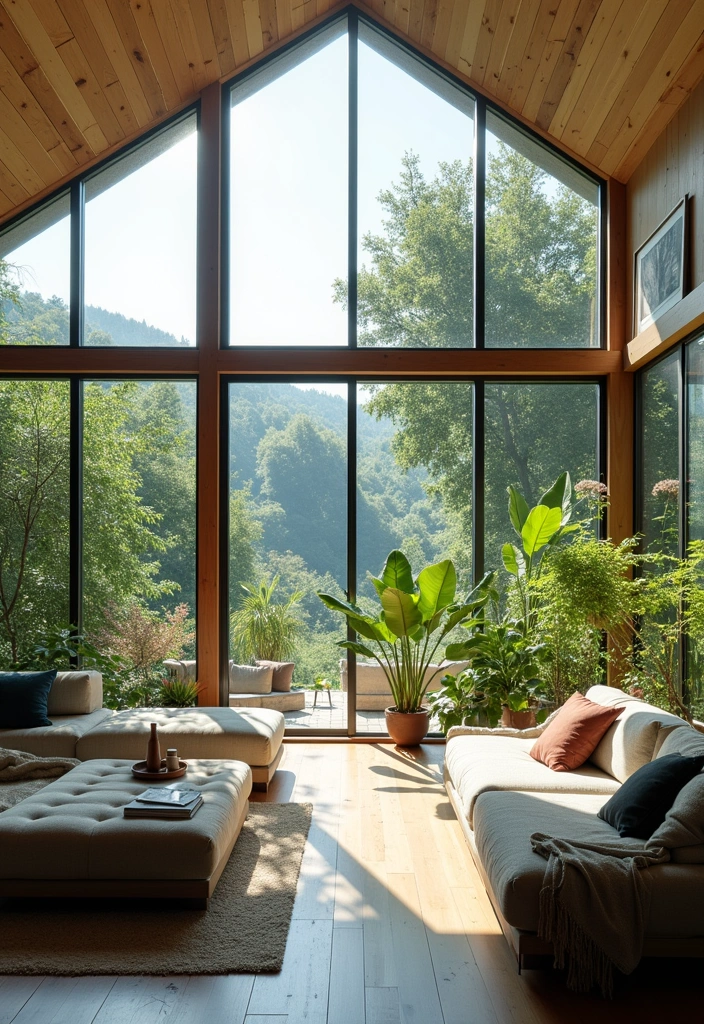
Natural ventilation plays a pivotal role in contemporary architectural design, fostering a seamless flow of air while minimizing dependence on mechanical systems. By employing strategic window placements and open layouts, alongside thoughtful building orientation, architects can cultivate comfortable indoor environments that thrive on natural breezes.
This approach not only helps maintain optimal temperatures but also enhances indoor air quality, aligning with sustainability objectives. To maximize the benefits of natural light and airflow, consider using window treatments that allow for effective light management.
Additionally, monitoring air quality is crucial for creating healthier spaces; utilizing air quality monitors can provide valuable insights into your indoor environment. For those interested in designing their own spaces with these principles in mind, home design software can be an invaluable tool, enabling you to visualize and implement natural ventilation strategies effectively.
15. The Use of Light in Design

Light is an essential element in modern architecture, significantly shaping how we perceive and interact with spaces. Innovative designs seamlessly integrate both natural and artificial lighting to elevate functionality and aesthetic appeal, crafting vibrant and dynamic environments.
Architects skillfully utilize features such as skylights and strategically positioned windows to define spaces while evoking a range of emotions. The deliberate manipulation of light has the power to transform a room’s ambiance, making it feel more expansive, inviting, and alive.
To delve deeper into the art of lighting design, consider exploring lighting design books that offer insights and inspiration. Additionally, investing in smart lighting systems can enhance your home’s ambiance with customizable settings. Finally, elevate your décor with home decor for bright spaces that accentuates the natural light in your environment.
16. Integrated Technology

Modern architecture is increasingly embracing the integration of technology into building designs, significantly enhancing both functionality and user experience. This evolution includes smart systems that can control lighting and temperature, as well as advanced materials that adapt to environmental changes.
For those looking to bring this innovative spirit into their own spaces, consider investing in smart office equipment that can transform your workspace into a more efficient environment. Additionally, tech gadgets for home can enhance comfort and convenience in everyday life.
Moreover, for those interested in deepening their understanding of this trend, there are insightful books on smart building technologies that explore the future of architecture. As smart technologies continue to evolve, they are not only creating dynamic and adaptable environments but also promoting energy efficiency and sustainability across modern architectural designs.
17. Open Concept Living
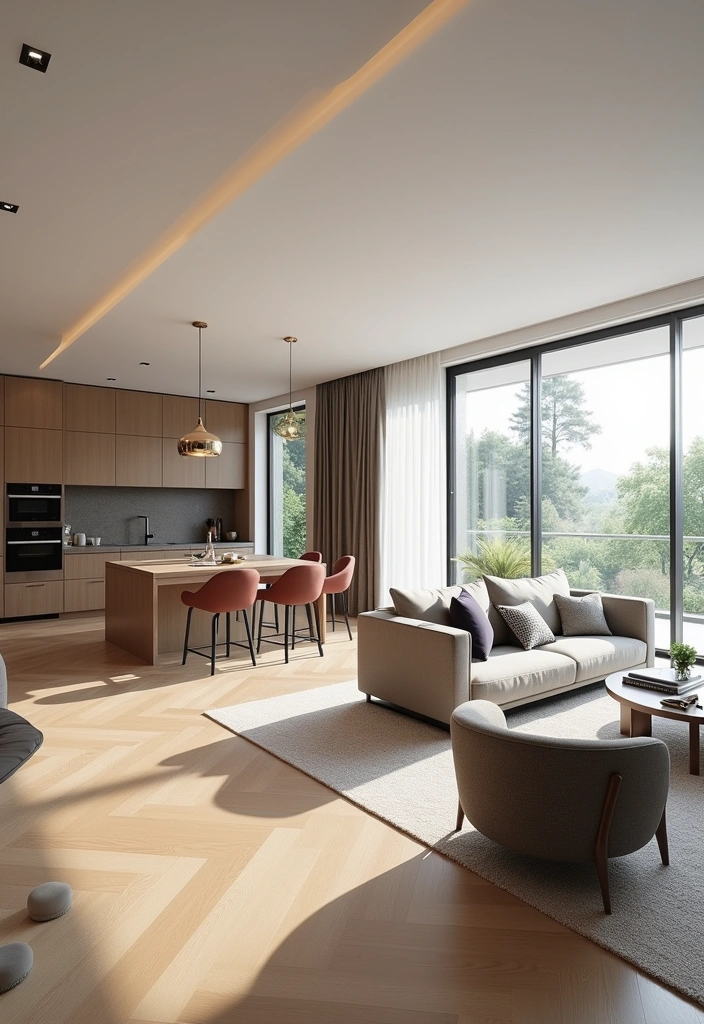
Open concept living is a defining characteristic of modern architecture, emphasizing fluidity and connectivity throughout various spaces. By removing walls between essential living areas, this design approach fosters a seamless transition from kitchens to living rooms, creating an inviting atmosphere.
This layout not only encourages social interaction but also maximizes the infusion of natural light, making even compact areas feel much larger and more welcoming. To fully embrace this contemporary lifestyle that values connection and togetherness, consider exploring Open Concept Design Guides for insights on optimizing your space. Additionally, enhancing your open layout with stylish Home Decor Accessories can further elevate the ambiance of your home.
18. Architectural Lighting
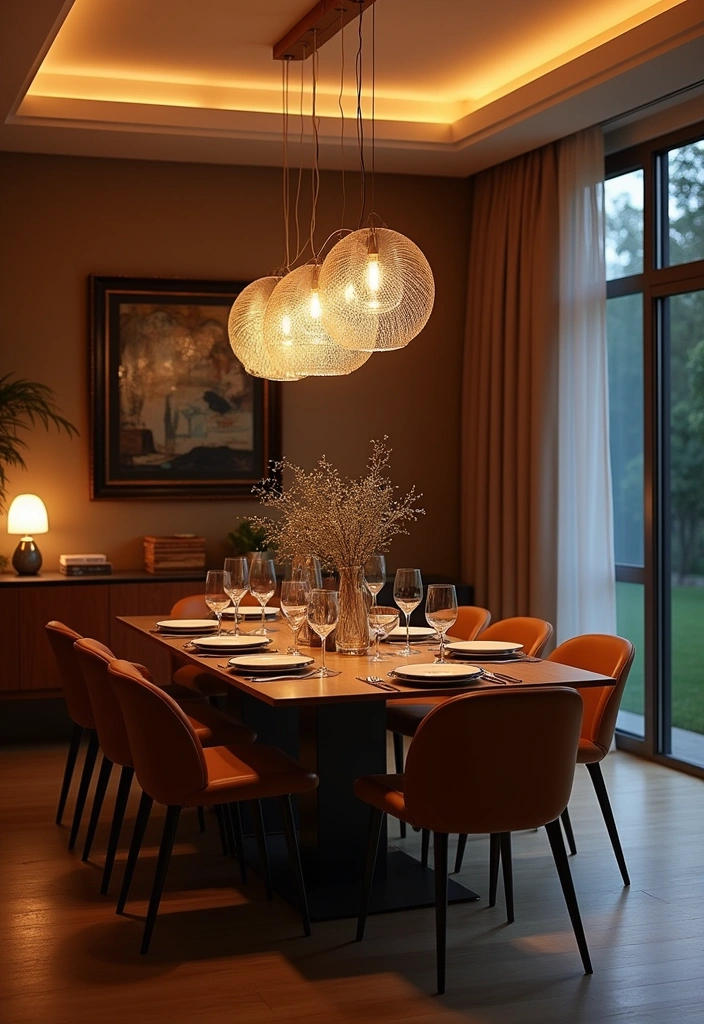
Architectural lighting plays a vital role in modern design, significantly enhancing both the functionality and visual appeal of spaces. Thoughtfully crafted lighting solutions can accentuate architectural features, create a captivating ambiance, and elevate the overall experience within any building.
From recessed lighting to eye-catching decorative light fixtures, incorporating the right elements can dramatically transform interiors, making them more inviting and dynamic. Explore the world of architectural lighting further with comprehensive Architectural Lighting Design Books, which offer valuable insights and inspiration for your projects.
Additionally, consider integrating decorative light fixtures that not only serve functional purposes but also add a unique touch to your spaces. For those looking to modernize their lighting experience, smart lighting controls can provide innovative solutions that enhance both convenience and energy efficiency. This trend underscores the significance of light as a fundamental aspect of architectural expression, bringing designs to life in extraordinary ways.
19. Community-Centric Designs
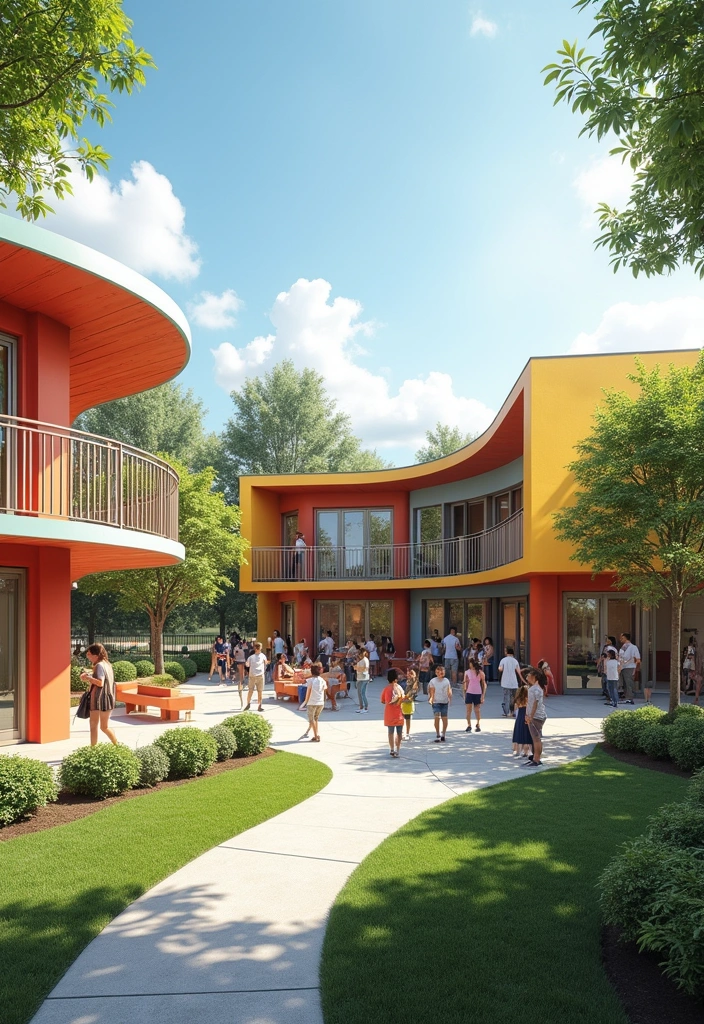
Community-centric designs prioritize the creation of spaces that encourage social interaction and inclusivity. In modern architecture, there is a growing emphasis on developing buildings that meet the needs of the community, fostering collaboration and engagement among residents.
From community centers that serve as hubs for local activities to shared public spaces that invite gatherings, these architectural trends are designed to enhance connectivity and strengthen neighborhood ties. To delve deeper into this movement, consider exploring insightful literature such as Books on Community Design or valuable Urban Planning Resources that discuss the philosophies behind these innovative designs.
Additionally, the importance of outdoor spaces cannot be understated. Investing in quality Outdoor Furniture for Public Spaces can enhance the usability and appeal of communal areas, inviting more people to connect and interact. This architectural shift reflects a deeper understanding of human experiences and relationships, moving beyond mere functionality to create vibrant, thriving communities.
20. Weather-Resilient Architecture
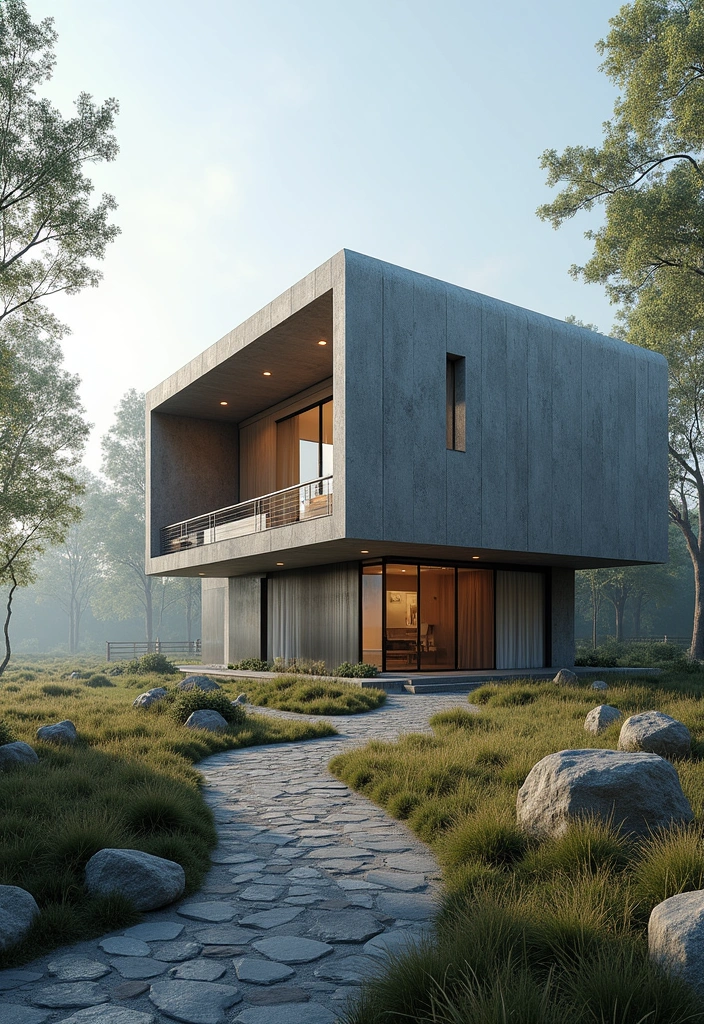
Weather-resilient architecture is a critical aspect of contemporary design, especially in light of the challenges presented by climate change. These innovative structures are engineered to endure extreme weather events, ensuring both the safety and longevity of their inhabitants.
To achieve this, architects incorporate durable materials and smart design strategies that aim to minimize damage and maintain functionality in adverse conditions. For those looking to enhance their own homes, consider investing in building materials for weather resistance that can provide an extra layer of protection.
Additionally, staying informed is essential. A comprehensive approach to disaster preparedness is crucial, and disaster preparedness guides can equip homeowners with the knowledge to mitigate risks effectively.
Finally, for a deeper understanding of resilient design principles, explore architecture books on resilient design that offer insights into creating sustainable and secure living environments in our ever-changing climate.
21. The Future of 3D Printing in Architecture
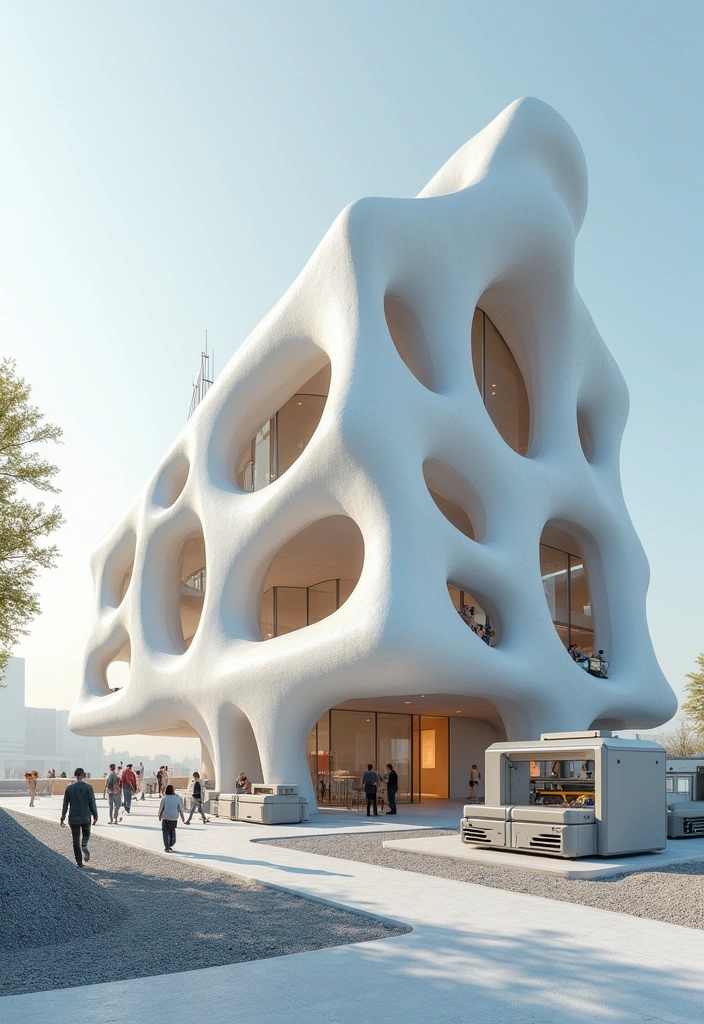
3D printing is transforming the architectural realm, unlocking a world of possibilities for both design and construction. This groundbreaking technology facilitates the rapid prototyping of intricate structures, significantly minimizing waste and reducing costs in the process.
Architects now have the ability to craft elaborate designs that were once deemed impossible to construct, thereby revolutionizing our approach to building. To fully leverage this innovation, investing in 3D printers for architecture is essential, allowing designers to bring their visions to life with remarkable precision.
Additionally, utilizing design software for 3D modeling can elevate the creative process, enabling architects to explore and refine their ideas effectively. As we continue to embrace advancements in 3D printing technology, it is set to redefine the future of architecture, making it not only more accessible but also increasingly sustainable. For those looking to deepen their understanding, there are also insightful books on 3D printing in construction that can provide valuable knowledge and inspiration.
Conclusion
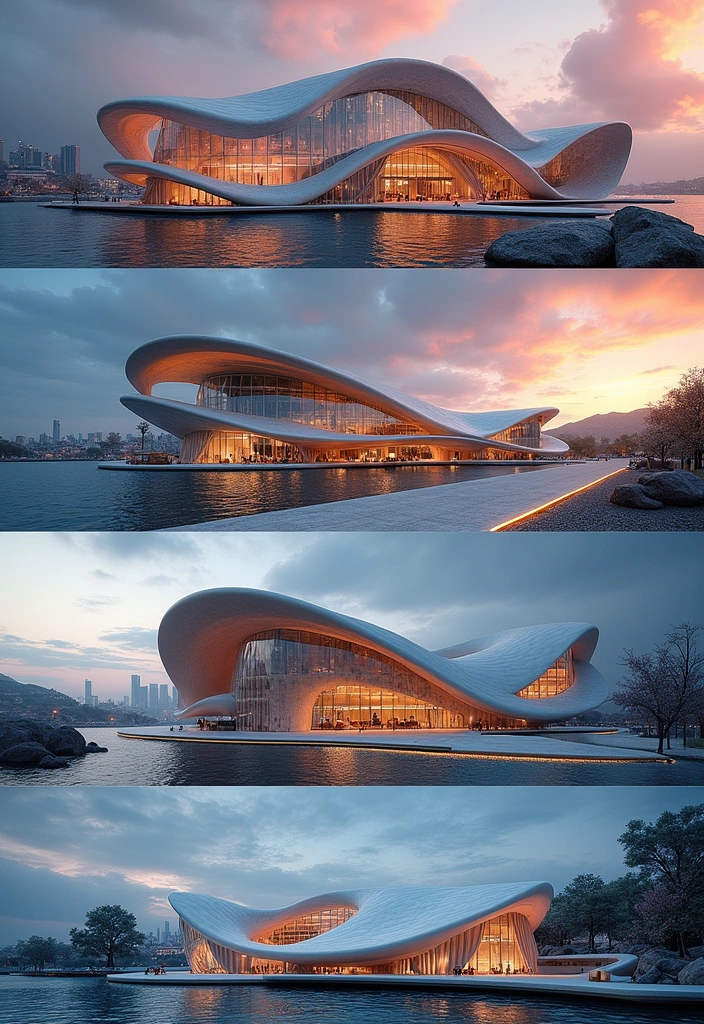
The world of modern architecture is a dynamic tapestry of innovation, creativity, and sustainability.
From floating houses to smart technology integration, these 21 designs showcase the endless possibilities within this exciting field. As we continue to explore and embrace these trends, we invite you to envision your dream spaces and consider how modern architecture can transform your environment.
Note: We aim to provide accurate product links, but some may occasionally expire or become unavailable. If this happens, please search directly on Amazon for the product or a suitable alternative.
This post contains Amazon affiliate links, meaning I may earn a small commission if you purchase through my links, at no extra cost to you.
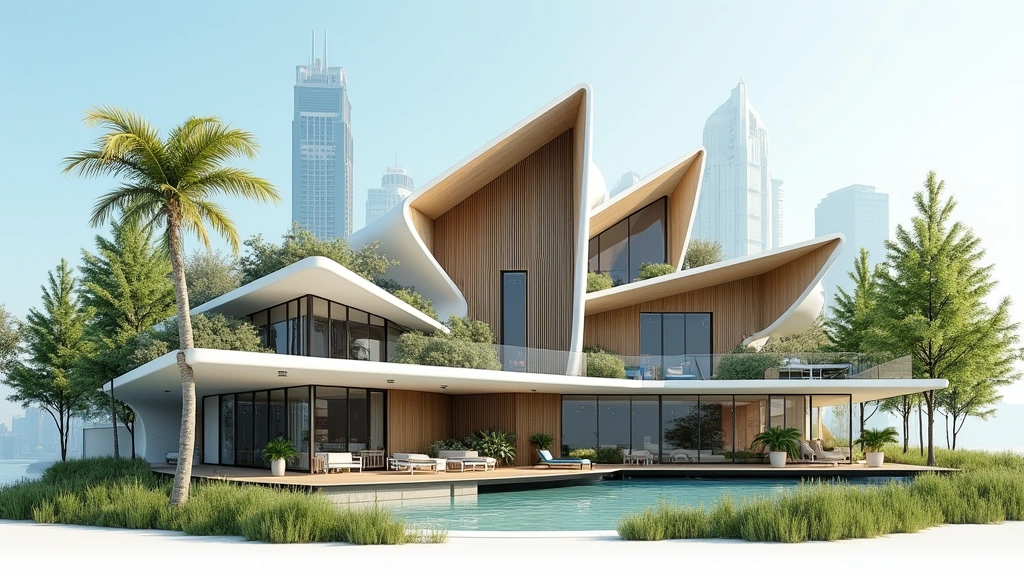
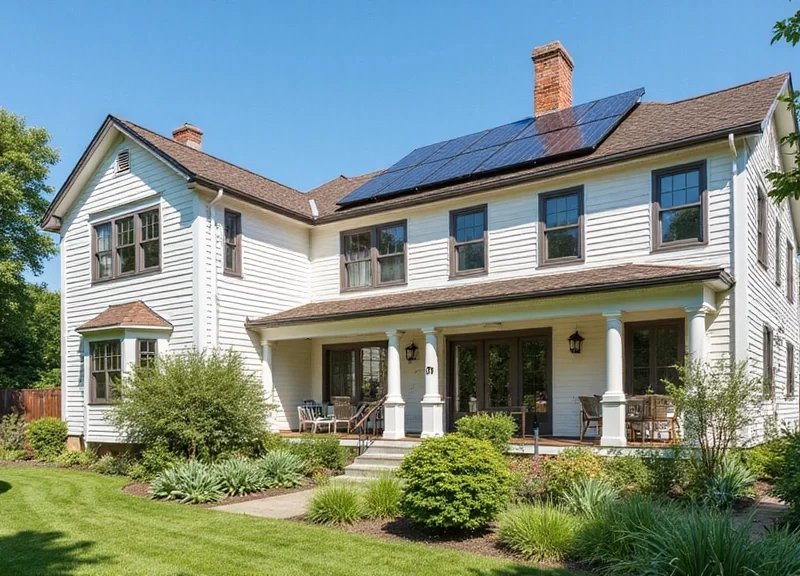
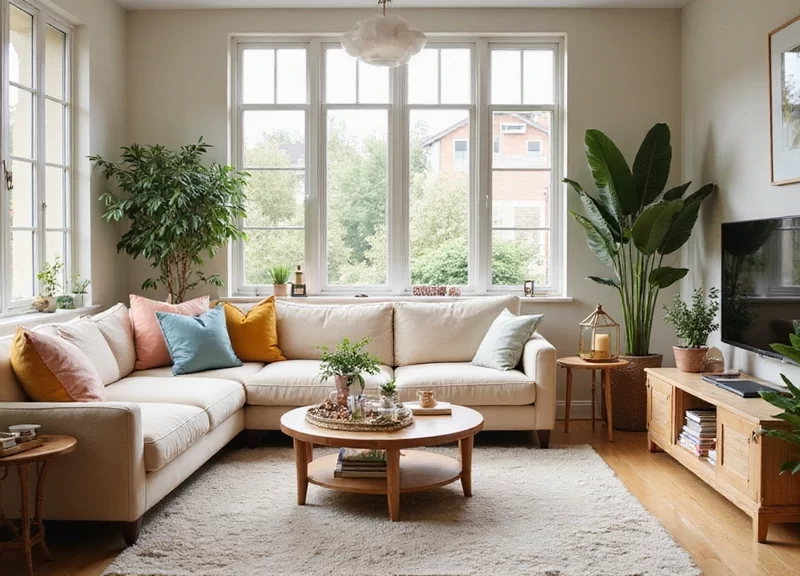
4 thoughts on “21 Modern Architecture Designs That Will Leave You Breathless (Wait Until You See #12!)”